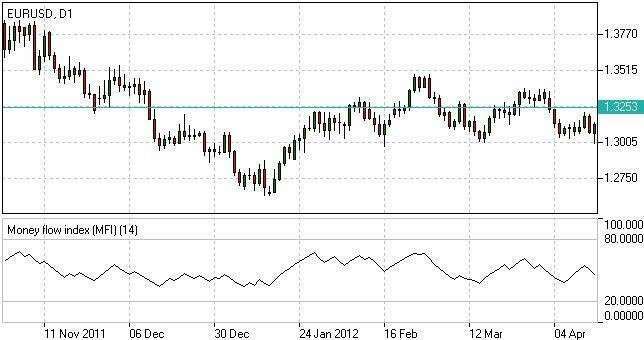
The basic formula for volume variance is the budgeted amount less the actual amount used multiplied by the budgeted price. As I mentioned, it’s a natural extension of sales volume variance. Sales volume variance is the difference between the quantity of inventory units the company expected to sell vs. the amount it actually sold. To calculate sales volume variance, subtract the budgeted quantity sold from the actual quantity sold and multiply by the standard selling price.
- With a little investigative effort, the firm can develop an action plan to improve this variance.
- Overhead variance regimes typically separate variable overhead from fixed overhead.
- Second, it is more likely that responsibility for overhead costs, even after additional investigation, is spread across several managers and/or departments.
- Sales data provides insight into your sales process and performance, especially when coupled with a CRM’s insights dashboards.
- When I introduced job-order costing in Chapter 4, I simultaneously introduced “normal costing” (from the illustration linked above) even without naming it as such.
- You can see the movements in your prices and product volume while also keeping your finger on the pulse of the performance of your product mix.
Variable overhead variances mean something a little different than direct materials and direct labor variances. The difference between the debit and the credit goes to the direct materials quantity variance account. The firm can record the price variance as part of its entry recording purchase of new direct materials. The credit will be the actual cost, usually credited to either cash or accounts payable.
2.3 Sales Volume Variance
Standard quantity is the quantity of an input (direct labor, direct materials, or overhead) per unit produced. Just because that’s the standard quantity doesn’t mean you can plug that number in for actual or budgeted quantity. Both the sales mix and sales quantity variance can be calculated with respect to weighted average profit or the standard profit margin per unit. Selling price variance is a type of sales variance that accounts for the difference in price for goods or services compared to the expected selling price. Selling price variance can impact the company‘s revenue goals either positively or negatively if it isn’t calculated and anticipated. Let’s say the standard quantity is actually 6 ounces, that is, given the number of finished goods units produced, the budget would predict that the company use six ounces.
Sex differences in airway volume and 3-dimensional shape in … – Nature.com
Sex differences in airway volume and 3-dimensional shape in ….
Posted: Fri, 25 Aug 2023 07:00:00 GMT [source]
If you already have the data in place to make accurate sales forecasts, then working out your sales volume variance should be your next step, as you have all the information you need to gain further powerful insights. Measuring your sales volume variance is a chance to reflect upon your sales forecast. Whether you exceed projected sales (favorable sales) or fall short (adverse sales), you’ll want to know how to account for them using costs or profits, so let’s take a look at those formulas now. If you want to keep your pipeline full, you must know whether your predictions are reasonable, and that means frequent comparisons of budgeted and actual sales.
How to Calculate Sales Variance
To calculate direct materials quantity variance, subtract the budgeted direct materials needed from the actual quantity used and multiply by the budgeted cost of direct materials. For example, if a company thought it would need 7 yards of fabric at $6 a yard for a product but only needed 5 yards, the variance is 2 multiplied by $6, or $12. Adding the two variables together, we get an overall variance of $4,800 (Unfavorable).
Are you looking for a way to streamline your business planning process? It’s an approach that combines all aspects of business planning into one comprehensive strategy, allowing you to make decisions quickly and accurately. This guide will help you understand how IBP works and how it can benefit your organization. In this example, I have provided the KPIs driving both sales revenue and wage expense as shown in the table above.
Direct Labor Volume Variance
Overhead variance regimes typically separate variable overhead from fixed overhead. So they come up with separate variances for variable and fixed overhead. Regardless, many companies calculate overhead variances and seem to get some good use out of them.

The sample variance would tend to be lower than the real variance of the population. When you collect data from a sample, the sample variance is used to make estimates or inferences about the population variance. When you have collected data from every member of the population that you’re interested in, you can get an exact value for population variance. The more spread the data, the larger the variance is in relation to the mean.
3.1 Cost Variances and Flexible Budgets
That is, a PDOH rate usually includes both variable and fixed overhead costs. Here on the cost variance side, I focus on the price and quantity variances. In the below discussion, I usually ignore how to make an invoice to get paid faster and start with flexible budget numbers to begin with. So the diagram above better shown as follows, at least for cost variances.

This is also sometimes called an “efficiency” variance or a “usage” variance. An unfavorable direct materials quantity variance suggests the firm is being inefficient with its direct materials on the production floor. With a little investigative effort, the firm can figure out an action to improve this variance. The standard costs for products that are used in a volume variance are usually compiled within the bill of materials, which itemizes the standard unit quantities and costs required to construct one unit of a product. “The difference between the budgeted or planned number of units to sell and actual sales” is called the sales volume variance. The difference in sales volume is beneficial if the total income is larger than that in the estimated output.
Emphasizing the significance of sales metrics like sales volume variance mirrors the attention placed on understanding total contract value in the broader realm of business growth. If you sell more than you budget for, you’ll see a positive number. That makes sense in terms of sales revenue, as you’ll likely have to adjust the selling price and sell those extra units off at a loss. Sales volume variance (SVV) is an important metric to track for both campaigns and individual products.
Variance figures to be a prominent theme for the 2023-24 Utah Jazz – SLC Dunk
Variance figures to be a prominent theme for the 2023-24 Utah Jazz.
Posted: Mon, 14 Aug 2023 07:00:00 GMT [source]
If not, then the results may come from individual differences of sample members instead. Uneven variances between samples result in biased and skewed test results. If you have uneven variances across samples, non-parametric tests are more appropriate.
If the standards upon which the https://online-accounting.net/ is calculated are in error or wildly optimistic, employees will have a tendency to ignore negative volume variance results. Consequently, it is best to use standards that are reasonably attainable. The variance is usually calculated automatically by whichever software you use for your statistical analysis. But you can also calculate it by hand to better understand how the formula works. Since the units of variance are much larger than those of a typical value of a data set, it’s harder to interpret the variance number intuitively.
